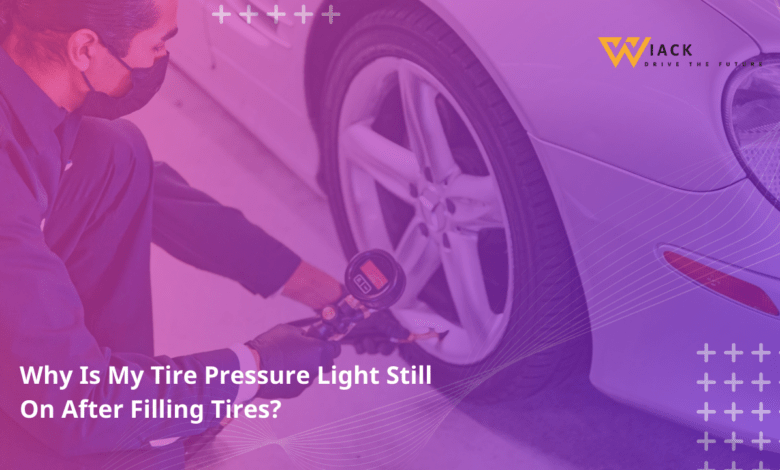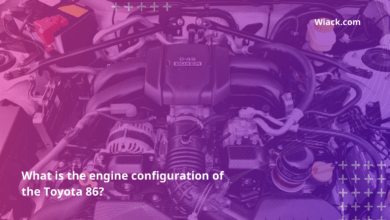Why Is My Tire Pressure Light Still On After Filling Tires?

Did you know that over 41 million speeding tickets are issued in the United States each year? While this statistic might seem unrelated to tire pressure, it highlights an important point: many drivers overlook crucial aspects of vehicle maintenance, including proper tire inflation. If you’ve recently filled your tires but the tire pressure light is still illuminated, you’re not alone. This common issue affects millions of drivers and can be both frustrating and concerning. In this comprehensive guide, we’ll explore the reasons behind this persistent problem and provide you with practical solutions to ensure your safety on the road.
Common Reasons for a Persistent Tire Pressure Light
When your tire pressure light remains on after filling your tires, it’s natural to feel confused and worried. However, understanding the potential causes can help you address the issue effectively. Let’s dive into the most common reasons for this persistent warning light.
Tire Damage or Puncture
One of the primary reasons why is my tire pressure light still on after filling tires could be due to tire damage or a puncture. Even if you’ve recently filled your tires, a small hole or crack can cause air to escape gradually. This slow leak might not be immediately noticeable but can trigger the Tire Pressure Monitoring System (TPMS) to keep the warning light on.
Tire damage can occur for various reasons:
- Running over sharp objects on the road
- Hitting potholes or curbs
- Natural wear and tear, especially in older tires
- Manufacturing defects (rare, but possible)
To check for tire damage:
- Visually inspect each tire for any visible punctures, cuts, or bulges
- Listen for any hissing sounds that might indicate a leak
- Use soapy water to spray on the tire surface and look for bubbles forming, which can indicate a leak
If you discover any damage, it’s crucial to have your tire repaired or replaced by a professional as soon as possible. Driving on a damaged tire can be dangerous and may lead to a blowout.
Leaking Valve Stem
Another common reason for persistent low tire pressure is a leaking valve stem. The valve stem is the small protrusion on your tire where you attach the air pump to inflate it. Over time, these valve stems can become damaged or worn, allowing air to escape slowly.
Signs of a leaking valve stem include:
- Dirt or grime around the valve stem area
- A whistling sound coming from the valve when driving
- Visible cracks or damage on the valve stem
To check for a leaking valve stem:
- Apply soapy water around the valve stem
- Look for bubbles forming, which indicate air escaping
- If bubbles appear, try tightening the valve stem core with a valve stem tool
- If tightening doesn’t solve the issue, the valve stem may need to be replaced
Replacing a valve stem is a relatively simple and inexpensive repair that can often be done without removing the tire from the wheel. However, if you’re not comfortable doing this yourself, it’s best to consult a professional mechanic.
Faulty TPMS Sensor
The Tire Pressure Monitoring System relies on sensors located in each tire to measure air pressure accurately. If one or more of these sensors malfunction, it can cause the tire pressure light to stay on even when the tires are properly inflated.
TPMS sensors can fail for several reasons:
- Battery depletion (most sensors have batteries that last 5-10 years)
- Physical damage from road debris or improper tire installation
- Electronic malfunction
Symptoms of a faulty TPMS sensor include:
- Tire pressure light coming on and off intermittently
- Incorrect pressure readings on your vehicle’s display
- Tire pressure light staying on constantly, regardless of actual tire pressure
Diagnosing a faulty TPMS sensor often requires specialized equipment. If you suspect this is the issue, it’s best to have your vehicle checked by a professional who can use a TPMS tool to communicate with the sensors and identify any malfunctions.
Incorrect Tire Pressure Reading
Sometimes, the answer to why is my tire pressure light still on after filling tires is simply an incorrect pressure reading. This can happen for a few reasons:
- Filling tires when they’re hot: Tire pressure increases as tires heat up during driving. If you fill your tires immediately after a long drive, the pressure reading may be inaccurate once the tires cool down.
- Inaccurate tire pressure gauge: If the gauge you’re using to check tire pressure is faulty, it may give you incorrect readings, leading you to under-inflate your tires.
- Not allowing enough time for the TPMS to recalibrate: Some TPMS systems need time and driving to recalibrate after tire inflation.
To ensure accurate tire pressure:
- Always check and fill tires when they’re cold (vehicle hasn’t been driven for at least 3 hours)
- Use a high-quality digital tire pressure gauge
- Allow your vehicle to sit for a few minutes after filling tires, then drive for 10-15 minutes to allow the TPMS to recalibrate
Faulty Wiring or Computer System
In rare cases, the persistent tire pressure light may be due to issues with your vehicle’s electrical system or onboard computer. Wiring problems or a glitch in the computer system can cause false readings or prevent the TPMS from resetting properly.
Signs of electrical or computer issues include:
- Multiple warning lights on your dashboard
- Erratic behavior of your vehicle’s electronic systems
- TPMS light flashing in a specific pattern
If you suspect an electrical or computer issue, it’s crucial to have your vehicle diagnosed by a professional mechanic or dealership. They have the specialized equipment needed to communicate with your vehicle’s computer system and identify any faults.
Troubleshooting Steps
Now that we’ve explored the common reasons why is my tire pressure light still on after filling tires, let’s dive into some practical troubleshooting steps you can take to address this issue. By following these steps, you can often resolve the problem without needing to visit a mechanic.
Check Tire Pressure with a Gauge
The first and most crucial step in troubleshooting a persistent tire pressure light is to manually check the pressure in all your tires, including the spare if your vehicle is equipped with a full-size spare tire. Here’s how to do it correctly:
- Ensure your tires are cold (vehicle hasn’t been driven for at least 3 hours)
- Locate the recommended tire pressure for your vehicle (usually found on a sticker inside the driver’s door jamb or in the owner’s manual)
- Remove the valve cap from one tire
- Press the tire pressure gauge firmly onto the valve stem
- Read the pressure displayed on the gauge
- Compare this reading to the recommended pressure
- If the pressure is low, add air until it reaches the recommended level
- Repeat this process for all tires
It’s important to use a reliable digital tire pressure gauge for this process. Analog gauges can be less accurate, and the air pressure gauges at gas stations may not be calibrated correctly.
If you find that one or more tires are significantly underinflated compared to the others, this could indicate a leak that needs to be addressed.
Inspect Tires for Damage or Punctures
After checking the tire pressure, the next step is to visually inspect each tire for signs of damage or punctures. Here’s what to look for:
- Tread inspection:
- Look for any nails, screws, or other objects embedded in the tire tread
- Check for cuts, bulges, or uneven wear patterns
- Sidewall inspection:
- Look for any cuts, cracks, or bulges in the sidewall
- Check for any signs of impact damage
- Rim inspection:
- Examine the area where the tire meets the rim for any signs of damage or separation
If you spot any damage, mark it with chalk or a paint pen so you can easily point it out to a tire professional. Small punctures in the tread area can often be repaired, but damage to the sidewall typically requires tire replacement.
Check Valve Stems for Leaks
Valve stem leaks are a common cause of slow air loss. Here’s how to check for valve stem leaks:
- Mix a solution of water and dish soap in a spray bottle
- Spray the soapy water around the valve stem
- Watch closely for any bubbles forming, which indicate air escaping
- If you see bubbles, try tightening the valve core with a valve core tool
- If tightening doesn’t stop the leak, the valve stem may need to be replaced
Valve stem replacement is a relatively simple procedure that can often be done without removing the tire from the wheel. However, if you’re not comfortable doing this yourself, it’s best to have it done by a professional.
Reset TPMS Sensor
Sometimes, the TPMS sensors need to be reset after filling the tires. The process for resetting the TPMS varies depending on your vehicle make and model. Here are some general steps:
- Inflate all tires to the recommended pressure
- Turn the key in the ignition to the “On” position, but don’t start the engine
- Locate the TPMS reset button (usually under the steering wheel or in the vehicle settings menu)
- Press and hold the reset button until the tire pressure light blinks three times
- Start the engine and let it run for about 20 minutes to allow the sensors to refresh
If these steps don’t work for your vehicle, consult your owner’s manual for the specific reset procedure. Some vehicles may require a special tool or a specific driving cycle to reset the TPMS.
Take the Vehicle to a Professional Mechanic
If you’ve tried all the above steps and are still wondering why is my tire pressure light still on after filling tires, it’s time to consult a professional. A qualified mechanic or tire specialist can:
- Use specialized TPMS diagnostic tools to communicate with your vehicle’s sensors
- Perform a thorough inspection of your tires, wheels, and TPMS components
- Identify any faulty sensors or other issues that may be causing the persistent warning light
- Recommend and perform necessary repairs or replacements
When choosing a mechanic or tire shop, look for:
- ASE (Automotive Service Excellence) certified technicians
- Positive customer reviews and ratings
- Experience with your specific vehicle make and model
- Warranty on parts and labor
Remember, driving with an illuminated tire pressure light can be dangerous, as it may indicate a serious issue with your tires or TPMS. If you’re unable to resolve the issue on your own, don’t hesitate to seek professional help.
Additional Considerations
As we continue to explore the question of why is my tire pressure light still on after filling tires, there are several additional factors to consider. These considerations can help you better understand your vehicle’s TPMS system and maintain proper tire pressure for optimal safety and performance.
TPMS Sensor Battery Depletion
One often overlooked aspect of the Tire Pressure Monitoring System is the battery life of the sensors. TPMS sensors are powered by small batteries that typically last between 5 to 10 years. As these batteries begin to deplete, they can cause erratic behavior in the system, including false low-pressure warnings.
Signs of a depleting TPMS sensor battery include:
- Intermittent tire pressure light illumination
- Inconsistent pressure readings on your vehicle’s display
- TPMS malfunction warnings
If your vehicle is more than 5 years old and you’re experiencing persistent TPMS issues, it might be time to consider replacing the sensor batteries. Here are some key points to remember:
- TPMS sensor batteries are not replaceable; the entire sensor unit needs to be replaced
- Sensor replacement should be done by a professional with the proper tools and knowledge
- After replacing sensors, the TPMS system will need to be reprogrammed to recognize the new sensors
- Consider replacing all sensors at once to ensure consistent performance and avoid future issues
While replacing TPMS sensors can be costly, it’s an important maintenance task that ensures your vehicle’s safety systems are functioning correctly.
TPMS System Calibration
Some vehicles require the TPMS system to be calibrated after tire inflation or rotation. This calibration process allows the system to learn the correct pressure readings for each tire position. If your system isn’t properly calibrated, it may continue to display warnings even after you’ve filled the tires to the correct pressure.
The calibration process varies by vehicle make and model, but generally involves:
- Inflating all tires to the recommended pressure
- Starting the calibration process through the vehicle’s infotainment system or a specific button sequence
- Driving the vehicle for a set period (usually 15-30 minutes) at a specific speed range
Consult your vehicle’s owner’s manual for the exact calibration procedure. If you’re unsure about the process, it’s best to have it done by a professional who is familiar with your vehicle’s specific TPMS system.
Cold Weather
Cold weather can have a significant impact on tire pressure and TPMS readings. As temperatures drop, the air inside your tires contracts, causing a decrease in pressure. This is why you might notice your tire pressure light coming on more frequently during the winter months.
Here are some important points to remember about tire pressure and cold weather:
- Tire pressure typically drops by 1 PSI for every 10°F decrease in temperature
- Always check tire pressure when tires are cold (vehicle hasn’t been driven for at least 3 hours)
- You may need to add air to your tires more frequently during cold weather
- Don’t overinflate tires to compensate for cold weather, as this can lead to handling issues and uneven wear
To manage tire pressure in cold weather:
- Check tire pressure more frequently during winter months
- Keep a portable tire inflator in your vehicle for emergency top-ups
- Consider using nitrogen in your tires, which is less susceptible to pressure changes due to temperature fluctuations
Importance of Maintaining Tire Pressure
Understanding why is my tire pressure light still on after filling tires is crucial, but it’s equally important to recognize why maintaining proper tire pressure is so vital. Correct tire inflation affects various aspects of your vehicle’s performance and safety:
- Fuel Efficiency: Properly inflated tires reduce rolling resistance, which can improve your vehicle’s fuel economy by up to 3%.
- Tire Wear: Under-inflated or over-inflated tires wear unevenly and more quickly, reducing their lifespan and potentially leading to premature replacement.
- Handling and Braking: Correct tire pressure ensures optimal contact between the tire and the road, improving handling and reducing braking distances.
- Safety: Properly inflated tires are less likely to fail at high speeds or in emergency maneuvers, reducing the risk of accidents.
- Comfort: Correct tire pressure provides a smoother ride by allowing the tire to absorb road imperfections more effectively.
To maintain proper tire pressure:
- Check tire pressure at least once a month and before long trips
- Always inflate tires to the manufacturer’s recommended pressure, not the maximum pressure listed on the tire sidewall
- Consider seasonal adjustments to account for temperature changes
- Have your tires and TPMS system inspected regularly by a professional
By understanding the importance of proper tire inflation and addressing issues promptly when your tire pressure light comes on, you’re taking an important step in ensuring your safety on the road.
In conclusion, while it can be frustrating when your tire pressure light remains on after filling your tires, there are usually logical explanations and solutions. By following the troubleshooting steps outlined in this guide and considering the additional factors we’ve discussed, you can often resolve the issue and ensure your vehicle’s TPMS is functioning correctly. Remember, when in doubt, it’s always best to consult with a professional mechanic who can provide expert diagnosis and repair. Stay safe on the roads, and don’t ignore those important warning lights on your dashboard!
Get the latest car news, reviews, and prices at Wiack.com. Your one-stop destination for all things automotive.





